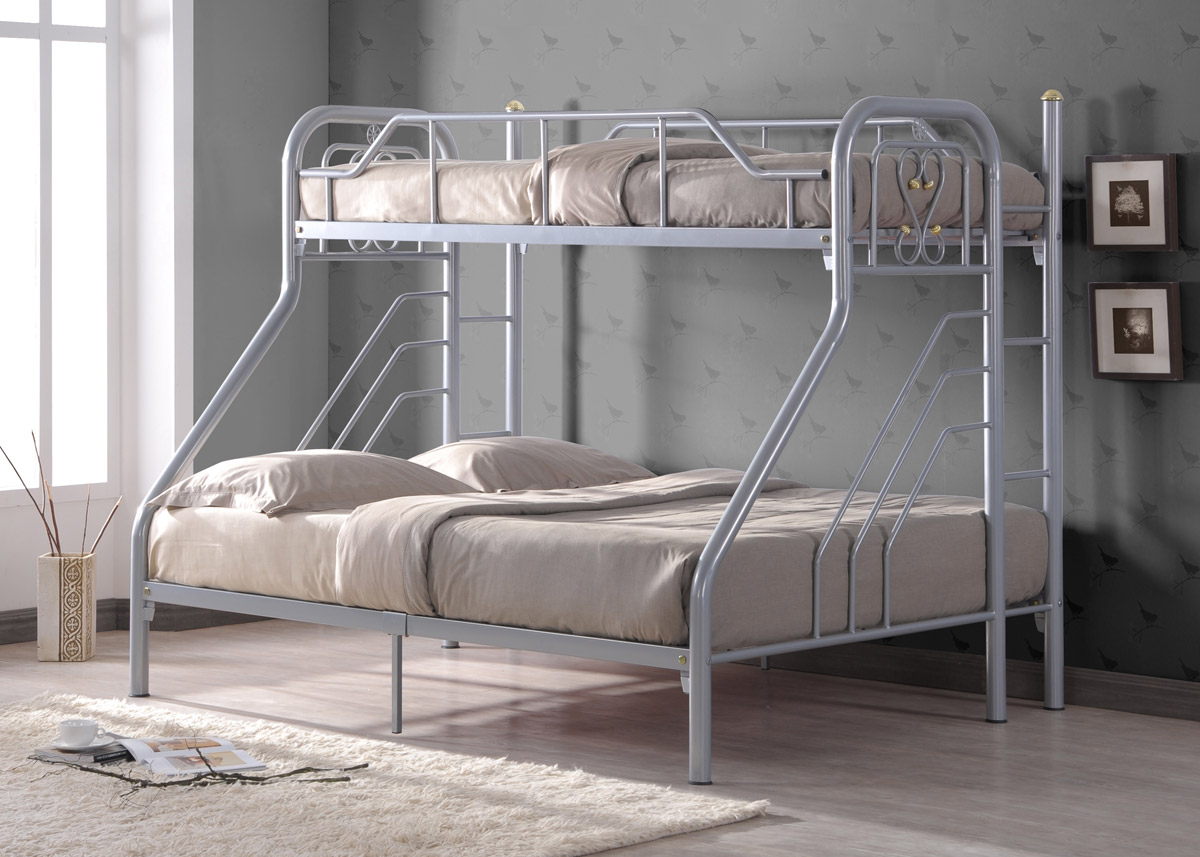Double Decker Bed Or Normal Bed- How To Choose?

How to Select a Bed
Choosing a bed isn’t easy, but understanding the benefits and drawbacks of each bed form will help you decide which one is right for you. There are various methods to determine which bed is best for you:
Make a list of the advantages of each and compare them.
Each bed type will have its own set of benefits and drawbacks. You’ll have to consider which perks you need, which you want, and which you can’t live without. Then you’ll have to find out which bed type best corresponds to your requirements.
Assume they’re looking for singles.
If you’re considering of acquiring double decker bed for your kids and subsequently transitioning them to singles, you may want to avoid it. It might save you money and help them adjust to adult life more quickly.
Make a long-term commitment.
Some bunk beds (but not all) can be split into single beds. If you want to test both choices, finding a model that allows for this might be a fantastic way to enjoy the best of both worlds while also allowing the beds to grow with your children.
Consult your physician.
Parents with special needs children should see a doctor before purchasing a bunk bed. Doctors will be able to tell you whether it’s a good idea and will inform you of any necessary preparations ahead of time.
Allow your children to chose their own beds.
Allowing your children to select their own bedding is a great approach to empower them and help them acquire confidence in their decision-making abilities. At the very least, you’ll be able to tell them it was their decision if they subsequently complain.
Are You Sure You Can Trust Your Kids to Pick Their Own Beds?
It’s acceptable if you’re considering allowing your children to choose their own beds (or beds). Many families have made furniture purchases by allowing the people who would use it the most to make the selections. It may also help children acquire confidence and learn the need of inspecting items before purchasing them.
However, we all know that there comes a time when children are no longer old enough to be trusted to make appropriate decisions. The difficult aspect is determining when that time is. Here are some fast indicators that kids are ready to choose a bed on their own:
They are able to communicate and clarify their wants.
A youngster who is unable to communicate is not old or mature enough to choose their own bed. It may seem self-evident, yet it is worth mentioning.
They don’t have any unique physical requirements, or if they do, they’re aware that they’ll need to choose a bed that accommodates them.
A kid with special needs should not choose his or her own bed until he or she is old enough to understand that not all beds are suitable.
Your children may discuss their options and make a choice together.
The choice to acquire a bunk bed will not influence just one kid; it will have an equal impact on both. Your youngsters aren’t ready if they can’t put their minds together, negotiate peacefully, and make a choice.
Neither kid is a risk taker.
Sure, that bright orange bunk bed seems nice right now, but you know they won’t want it when they get home. That’s obvious to you, but do they realise it?
Your children understand the need of sticking to a budget and a limited amount of space.
Do your kids cooperate and appear appreciative if you tell them they may only purchase a reward up to $40? If that’s the case, they could be ready to choose their own bed. Otherwise, they may need to mature a little.
When Should Bunk Beds Not Be Considered?
Bunk beds should be OK for most kids if they are utilised appropriately and cautiously. If any of the following apply to your kid, a bunk bed may be too unsafe for them to use:
Your kid has a convulsive condition, a muscle disorder, or another physical problem that makes it difficult for them to move.
For their own safety, children with particular muscular difficulties such as convulsions (like epilepsy), weakness (like MS), or clumsiness (like neurological illnesses) should be placed in a single bed. The possibility of falling from the top bunk is just too great!
One of your children has a reputation for being rowdy.
The issue with bunk beds is similar to that with conventional beds. They may break if they are handled harshly. If the top bunk collapses, it becomes a serious concern for both children. As a result, rowdy children should avoid bunk beds.
Your ceiling is quite low.
This is a problem with both space and safety. If your ceiling is too low, you may not be able to fit the top bunk in at all. If the ceiling just scrapes by, one youngster may be at danger of sustaining a head injury at wake-up time.
Your doctor has specifically advised you against putting one or more of your children in a bunk bed.
There are other unusual conditions that might make a doctor concerned about a child’s safety, in addition to convulsive disorders and typical muscular problems. It’s advisable to follow your pediatrician’s advice if he says bunk beds aren’t a good idea.
Incontinence affects one or both of your children.
Nobody likes to be startled awake by a leak from above. That is not something you should do to your youngster who is on the bottom bunk.
Is It Possible To Use A Hand-Me-Down?
If there’s one thing that parents appreciate, it’s receiving hand-me-downs from others. This is particularly true when it comes to furnishings. Who doesn’t appreciate saving money on a new school desk or a child’s chair, after all?
Single Hand-Me-Down Beds Are Acceptable
If a family member provides an old single bed, you can almost certainly use it for one of your children. Single beds are well-made and do not constitute a safety threat. As a result, a youngster as young as four years old may sleep on a standard bed with no problems.
It’s a good idea to clean it off and sterilise it before using it, just like any other piece of furniture. Aside from that, as long as the bed’s structure is firm and undamaged, you should be OK.
Bunk Beds with Hand-Me-Downs? There’s no way.
Bunk beds, on the other hand, are a different story. Over the last several years, there have been scores of bunk bed recalls, and the safety laws governing bunk beds have altered as well. It’s possible that having an older model isn’t as safe as it may be. Furthermore, wear and tear might make a bunk bed shakier than typical.
Conclusion
When it comes to the age-old dilemma of single beds vs bunk beds, there is no genuine formula that allows parents to make a universally correct selection. Bunk beds are appropriate for youngsters aged six to fifteen who are in good health and are calm enough to avoid misbehaving in their beds.
Even with the healthiest of children, bunk beds are often chosen due to a need to save space. If you’re worried about your child’s safety, have a child with special needs, or simply want to give your kids some space, a pair of single beds is probably the best option.
Choosing a bed type does not have to be a chore for you, nor does it have to be something on which your doctor consults. Offer to let your children choose whether they want bunk beds or single beds on their own, if they are old enough.
Explore more articles at Giga Article



